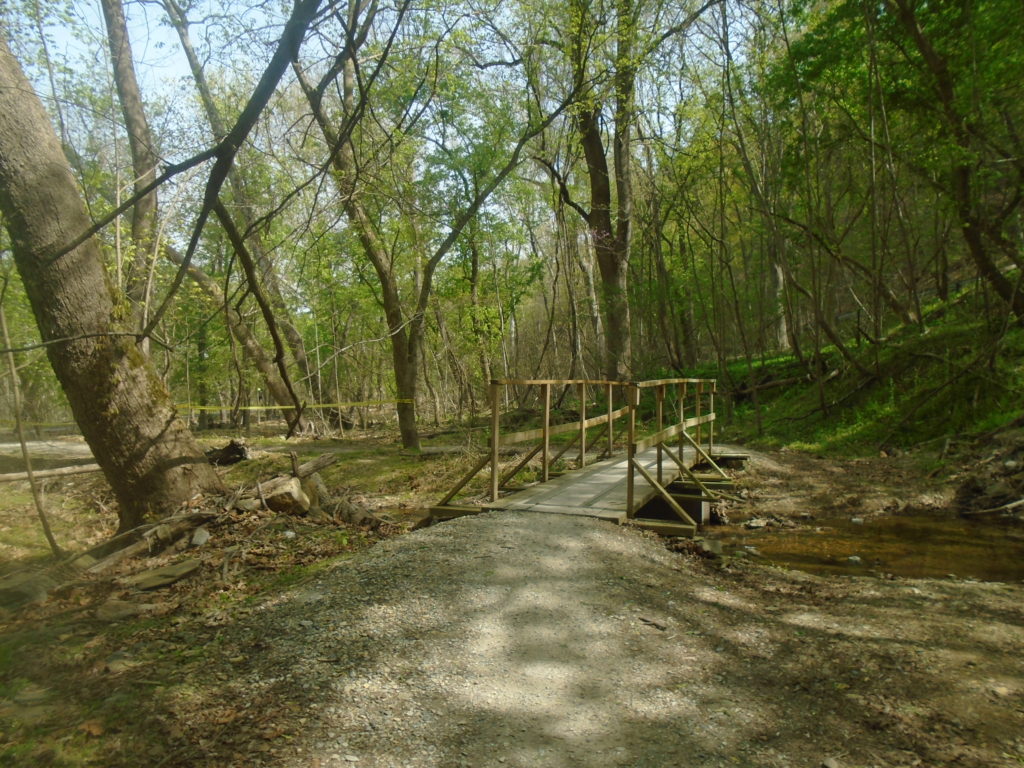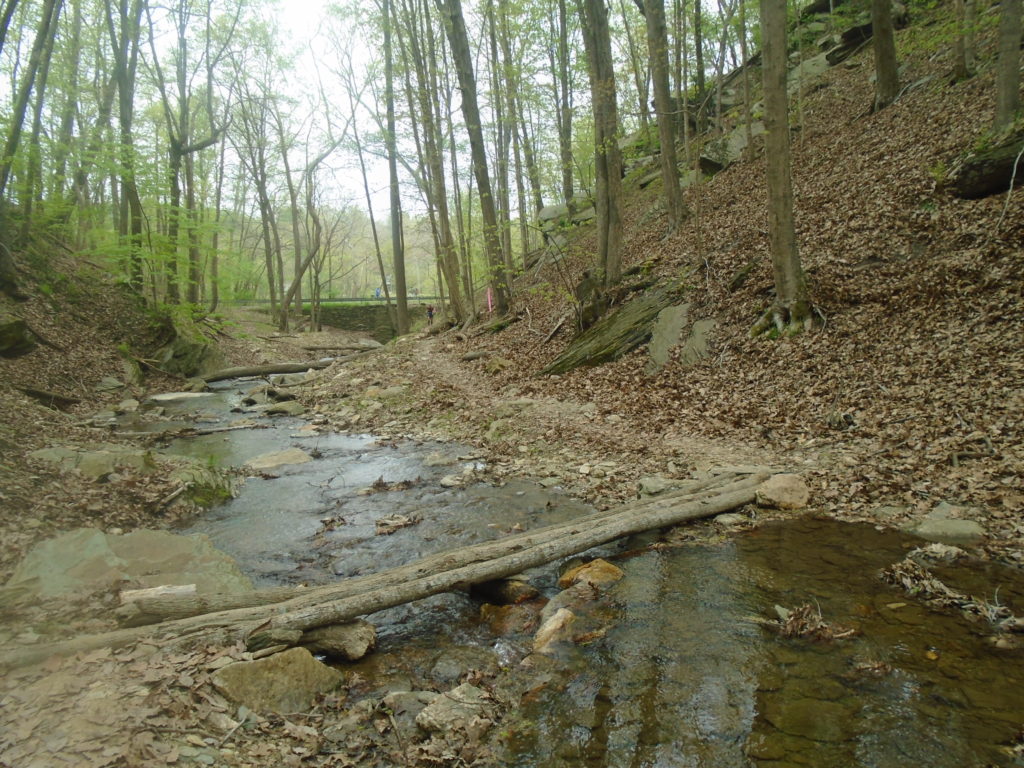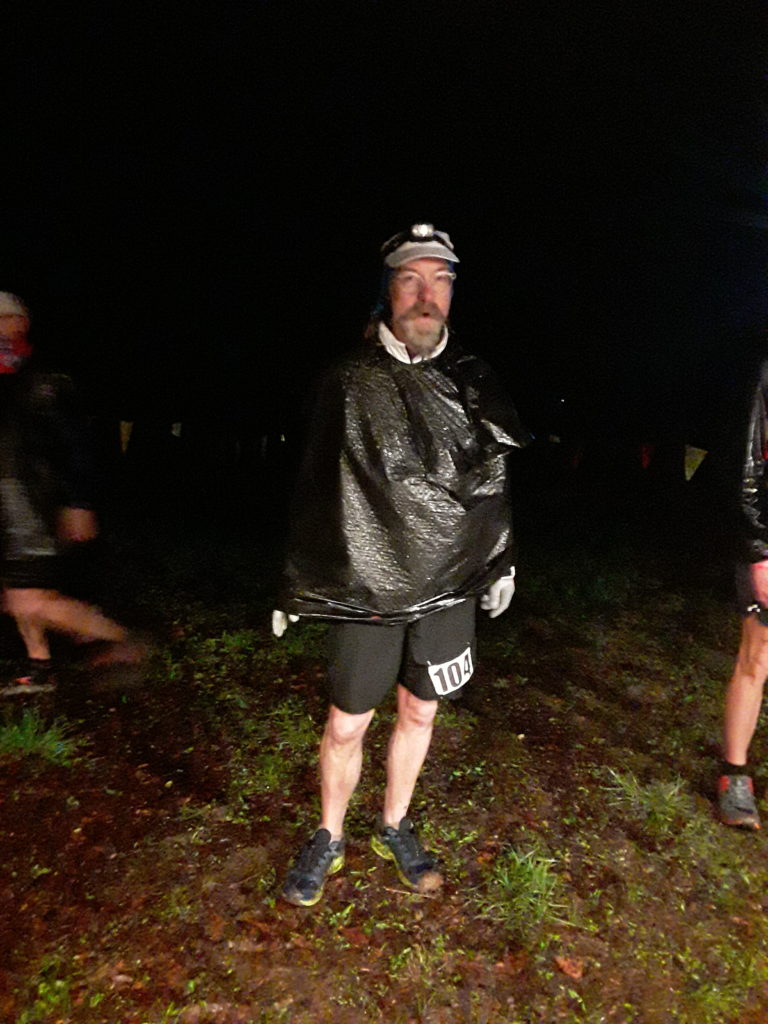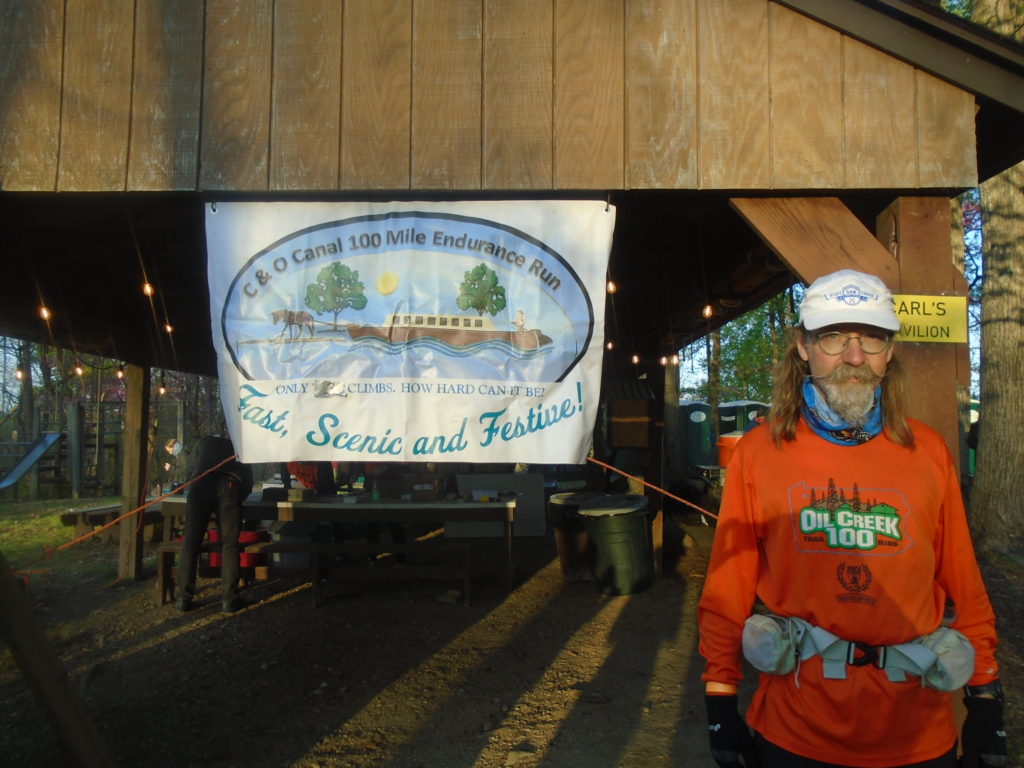Saturday was the 8th running of the C&O Canal 100 Mile. The course consists of 3 “loops” on the C&O Canal towpath starting from Camp Manidokan near Knoxvill, MD. The first loop is 38 miles followed by two 31 mile out-and-backs. The race starts with a small loop around the field where you park and camping is available. Then there is a short, single track trail that drops about 250 feet from the start/finish down to the canal. After that it’s just miles and miles of pancake flat towpath between you and a buckle.
If only it was that easy.
The real challenge for this race is less the course itself than the weather. This was my third attempt at this race with a DNF in 2015 and a redemption run in 2016 preceding this year’s race. In all three years, the weather has been cold and rainy. Success at this race depends on your ability to deal with cold, rainy temperatures for up to 12 hours at a time. I have a setup that works well for me and I had backup options available in my drop bags. And even with all my experience . . . but I’m getting a little ahead of myself.
Last September, I set a 100 mile personal best of 21:32 at Pine Creek on a similar course. That consisted of running an easy 10 minute pace through 25 miles, which lead to me basically walking it in from mile 80 onwards. The moral of that story being that I can’t run easy enough for a hundred miler so I need to mix in walk breaks right from the beginning. A 10 minute pace was obviously too fast, so I thought I’d give 11 minutes a shot.

The race’s COVID mitigation plan had us starting in waves of 40 people every 10 minutes. I went off in the second wave at 7:10am. As I’m standing there, I recognize Pete who I spent some late miles with at Pine Creek. We chat for a couple minutes and then we’re off. A quick trip around the field, down a narrow, technical trail, and then we’re onto the towpath.

Right after we hit the canal, I catch up to Pete. We start chatting and quickly discover that we’ve got the same pacing plan. Mike, who camped next to me the prior night, and Fernando were soon added to our little group. We spent the first ten miles up to the North Turnaround getting to know each other and generally trying not to think too hard about what was in store for us.
I kept pretty close track of my average pace and settled on a range of 10:52-10:55. I would start running when I got to the higher end and switched back to walking at the lower end. As we made our way south, Pete, Mike, and then Fernando slowly fell back a little and I was running by myself. The weather was just about perfect and the miles felt pretty easy.

The first big decision arrived when I hit Brunswick for the first time. I had Ensure Plus shakes in my drop bag and I usually have these to supplement what I grab from the aid stations. This time I decided to forgo them as the Coke/oranges/gummy bear combination was working well. Sometimes the shakes can be a bit much to stomach (literally) so I thought I would keep with what was working for me.

I got into Manidokan for the first time around 7 hours averaging an 11 minute pace. Boom – right on plan. I grabbed some tunes and was back out onto the course in short order. The music gave me a nice little boost and I managed 2 more sub-11 minute miles before the wheels started wobbling. Along this stretch I ran with Ben (my other camping neighbor) and Ryan for short spells. It was nice to have some names to offer encouragement to as we passed each other along the course. While out-and-back formats are not for everyone, they provide a more social environment than many ultras where you can go hours without seeing another living soul.

Loop two became a game of how long can I keep running below goal pace (12 minute). While I was still moving very well, I kept losing time to porta-potties that were set up along the course. Dargan Bend, Brunswick, and Manidokan all had a couple along with several at some of the campgrounds set up along the towpath.
The rain started about 7pm after I had left Brunswick for the second time. It was very light at this point and my long sleeve shirt was plenty of protection for most of the trip back up to the start/finish. I pulled on some knit gloves I had been carrying since the beginning with a couple miles left.

Once back at Manidokan, I spent an extra couple minutes getting ready for the night. On went a new long sleeve shirt, my rain coat, and my winter gloves. I swapped out my backup headlamp for my new one. Then I topped up my bottles, grabbed some food, and went back out for one . . . more . . . loop.
The rain started to pick up as I made my way up to Antietam. I was still feeling pretty warm, but could tell it was only a matter of time before that would change. I sat down for the first time at Antietam (mile 75, 9:30pm) as I had some gravel in my shoes and I thought it best to take care of it. My aid station strategy is to spend as little time as possible in them during the day (minute or two max) and as much time as needed once it gets dark. Marshmallows were a nice snack here.
The next 15 miles were far and away the hardest for me during the race. I was getting wetter and colder as I moved along. While Dargan Bend was only a partial aid station, it was a welcome oasis for me. I needed something warm to drink and they had coffee so I had them fill up half a bottle for me to take along. I ended up not drinking a drop of it, however it helped keep me warm for a couple miles. Unfortunately, my secret weapon (hand warmers) that I broke out here must have been well past their expiration date because they provided no warmth. Luckily, I was still moving very well knocking out 12-13 minute miles. I was completely focused on getting to Brunswick which had dry clothes in my drop bag.
Rolling into Brunswick for the last time, I knew my dream of sub-20 was over and I was completely fine. I sat down and was quickly joined by Cortney, Steve, and their pacers. We dried off, got some warm food and drinks in us. None of us seemed to be in any rush to leave the place. One of the volunteers asked if we wanted any trash bags and it sounded like a great idea. Even though I had dry clothes and only 10 more miles to go, I figured it was better to be safe than sorry. Success in ultras a lot of times comes down to risk mitigation. Mistakes and issues are going to happen. The goal is to keep them small and minimize the chances of them becoming insurmountable.
The trip back up to Manidokan was relatively uneventful. The rain started to taper off a little bit, but never really stopped completely until I was finished (obviously). Outside of aid station miles, I was staying below 14 minute pace which is orders of magnitude faster than I usually finish these races. And then like all things that seem like they’ll never end, I was done – 20 hours, 42 minutes.
Kudos to Lance Dockery and all the volunteers for putting on such a wonderful race. This is a well organized, low key event that really is perfect for those wanting to test themselves at the 100 mile distance. I won’t call it easy. The weather won’t let me. Neither will the 64% finisher rate this year. Though I can call it flat. I’m not sure if I’ll ever be back (lots of other great races for me to run), but if I do I’ll definitely pack a garbage bag next time.


